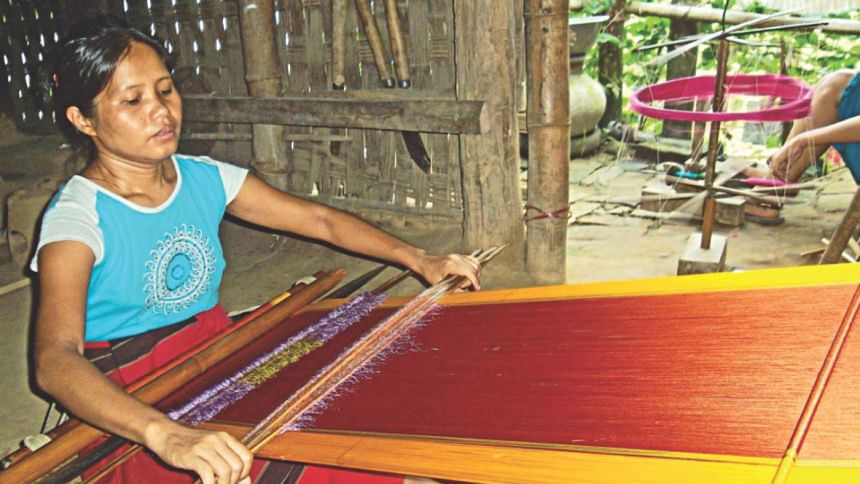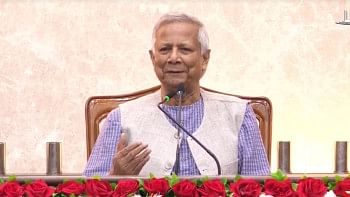Weaving offers income for indigenous women

Since before anyone can remember, the women of Rangapani village in Rangamati municipality have woven their own clothes at home, by hand. Nowadays, the production of traditional Chakma pinon-hadi outfits has a commercial purpose; weaving is helping many to better support themselves and their families.
When Chittibi Chakma, an eighth grader of Moanoghar Residential High School returns home from class, she starts to weave. "When I sell pinon-hadi," she says, "I can maintain my expenses easily." She earns up to Tk 3,000 per month, which means the family can afford her education. "But it takes longer to produce an item," she says, "because I also have to study."
Her neighbour Kalabi Chakma, 42, is able to pay for schooling for her sons due to weaving. "Weaving is our livelihood," she says, "even at times like now when the price of raw materials has risen and is eating into profits."
With around 200 local families involved in the craft, such that looms are almost a prerequisite for any village home, as a source of traditional clothes Rangapani has gained quite a reputation.
To visit of a weekend, when time is more abundant for many, is to see, house to house, weavers busily working on a skirt-like pinon or the shawl-like hadi; and the younger generation is, if anything, more enthusiastic about the tradition than their older relatives.
Durgapudi Chakma is a yarn-and-cloth trader benefiting from Rangapani's success. "I collect yarn from the market and deliver them to weavers directly," she says. According to Durgapudi, a weaver can earn up to Tk 3,000 for a completed pinon, which will subsequently fetch a retail price of up to Tk 5,000 in the local market.
"Cotton prices are higher now," Durgapudi says. "Profits are a little less, especially for the more intricate pinon designs which require more work and yarn to produce."
Weavers are also supported by a number of local organisations able to offer loans for start-up capital. "Many women can't afford the yarn but they are interested in the business," says Suraja Chakma, president of the local weaving association, the Champaful Mohila Samiti. "I started our association with them in our village to provide an easy loan facility."
The Rangamati office of NGO Proshika Manobik Unnayan Kendra has also, by tradition, helped local weavers' association to organise loans for their members. "We sometimes gave loans to local weaving organisations," says area coordinator ABM Ahsan Ullah, "though nowadays it's less common for us."
Despite fluctuations in cotton price and the need for continued favourable loan access to finance capital, Rangapani's pinon-hadi industry looks to have a bright future, especially as the merits of traditional Chakma fashion are increasingly recognised by Bangalee women too, which means the nationwide demand for pinon-hadi outfits is continuing to grow.

 For all latest news, follow The Daily Star's Google News channel.
For all latest news, follow The Daily Star's Google News channel. 



Comments